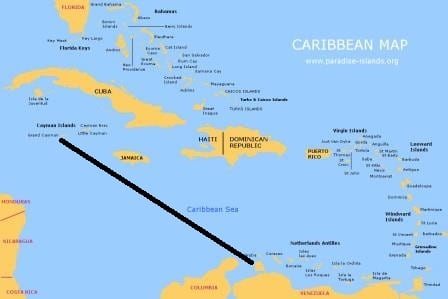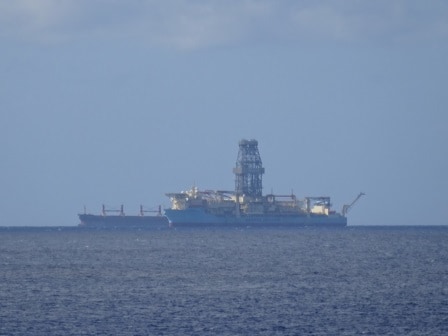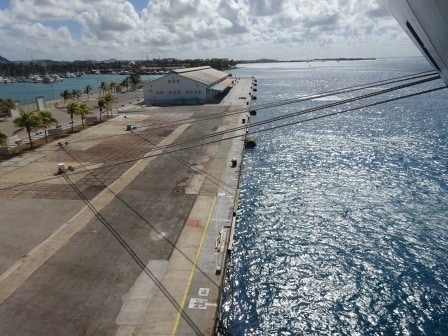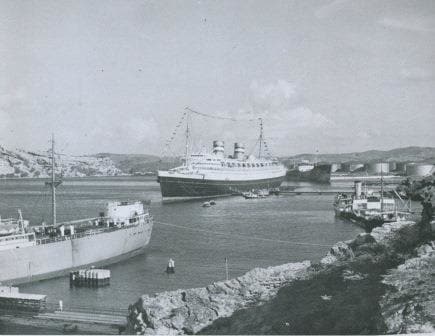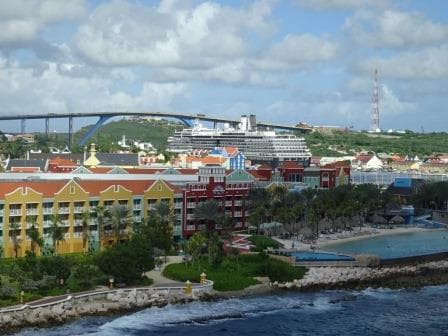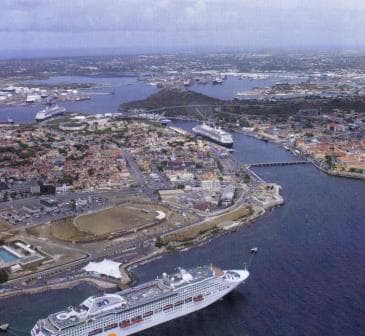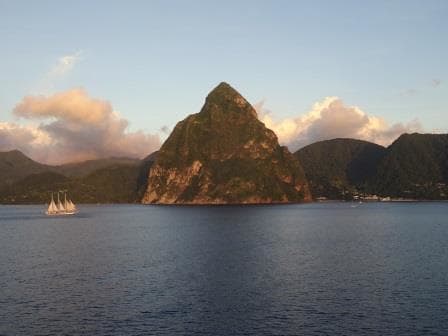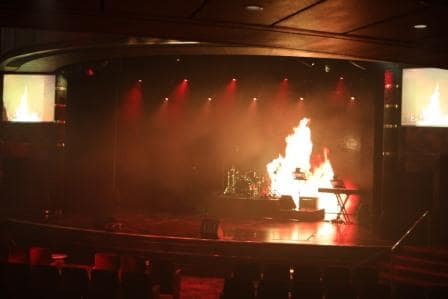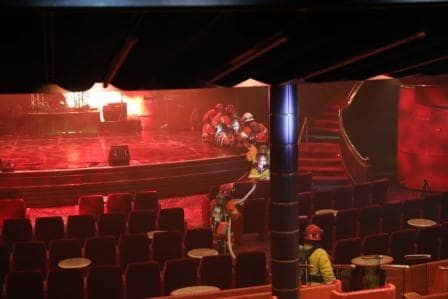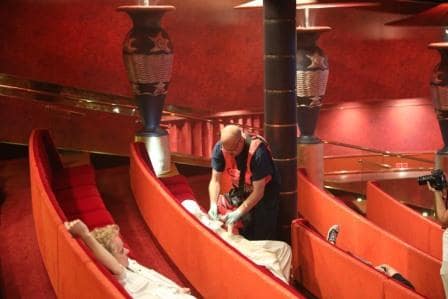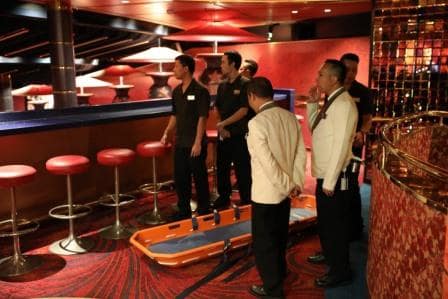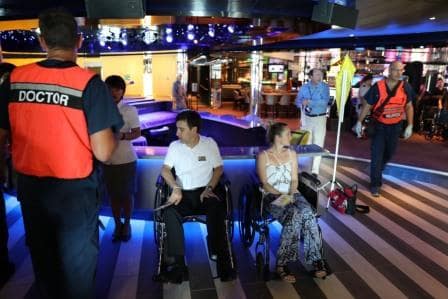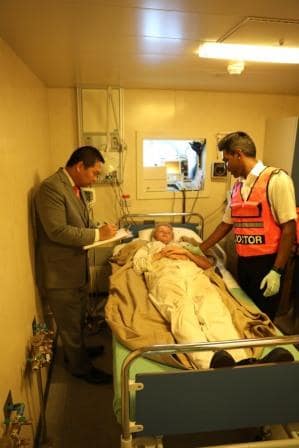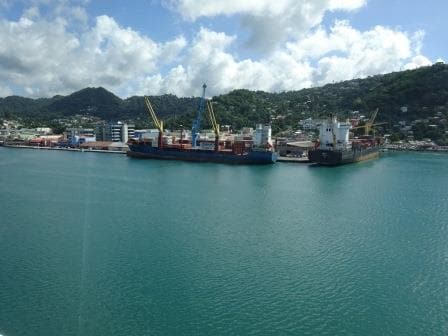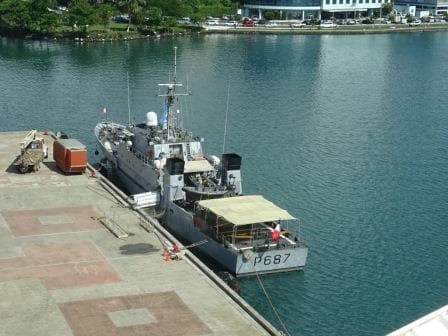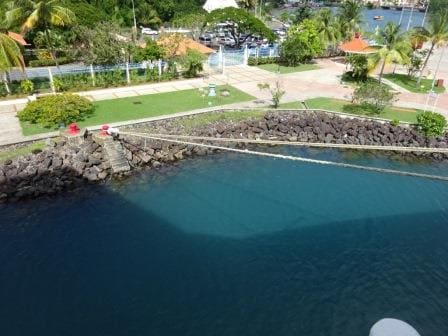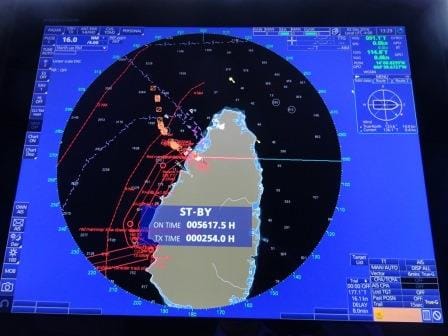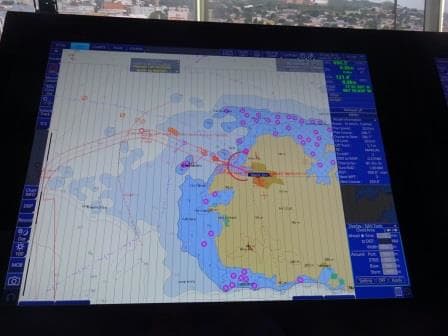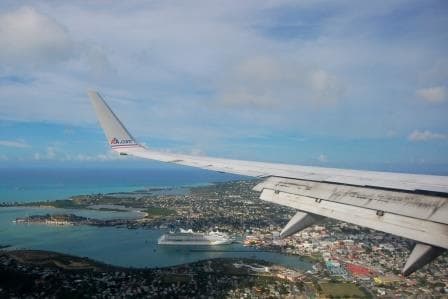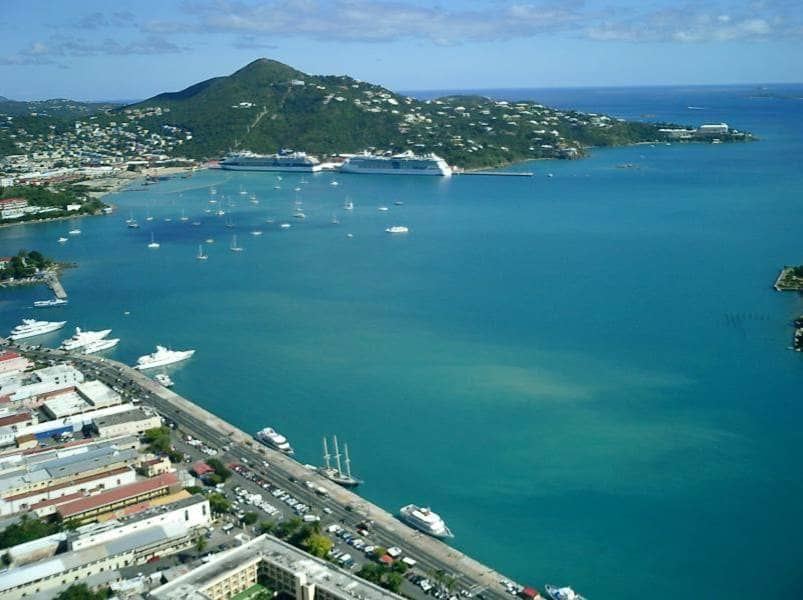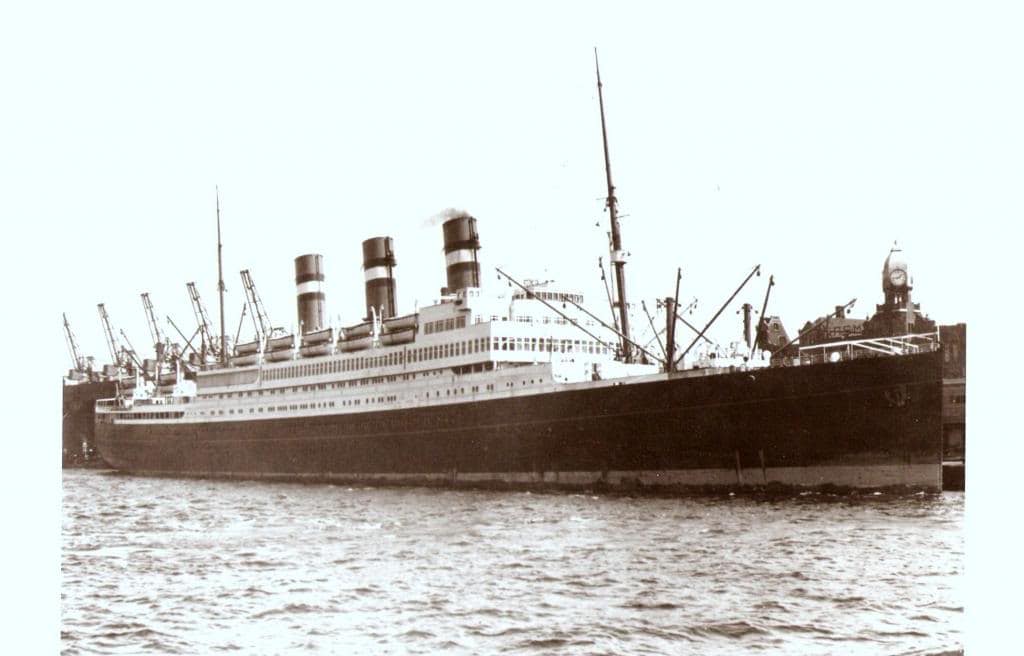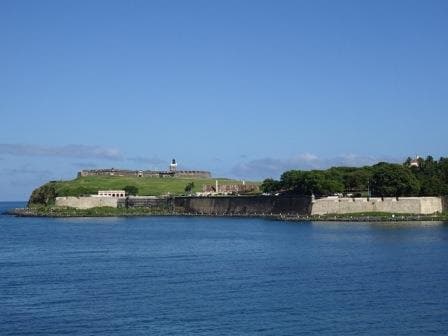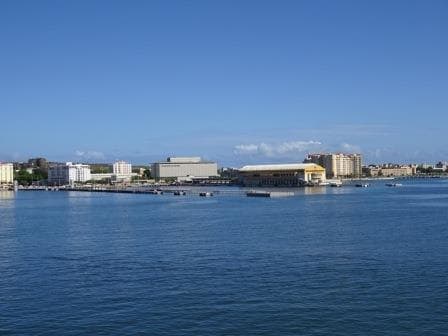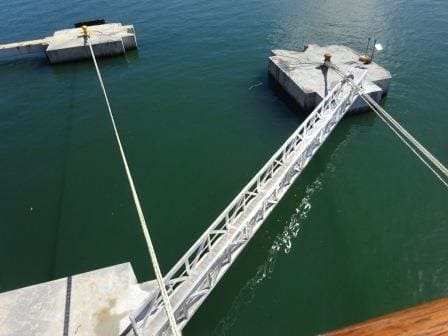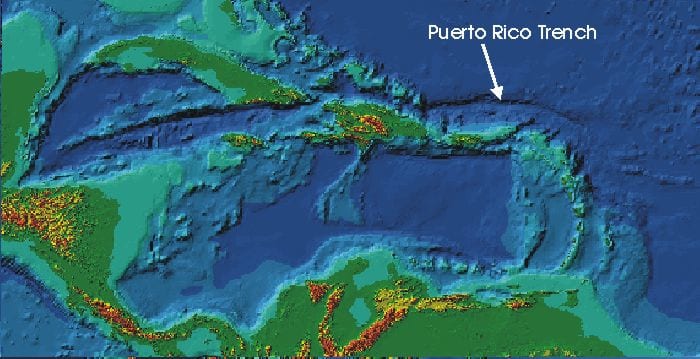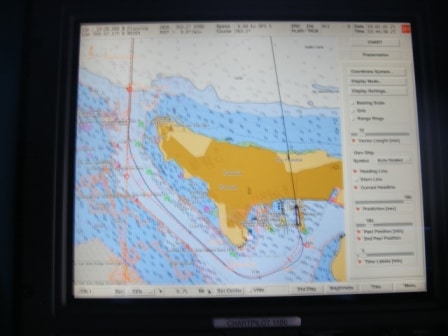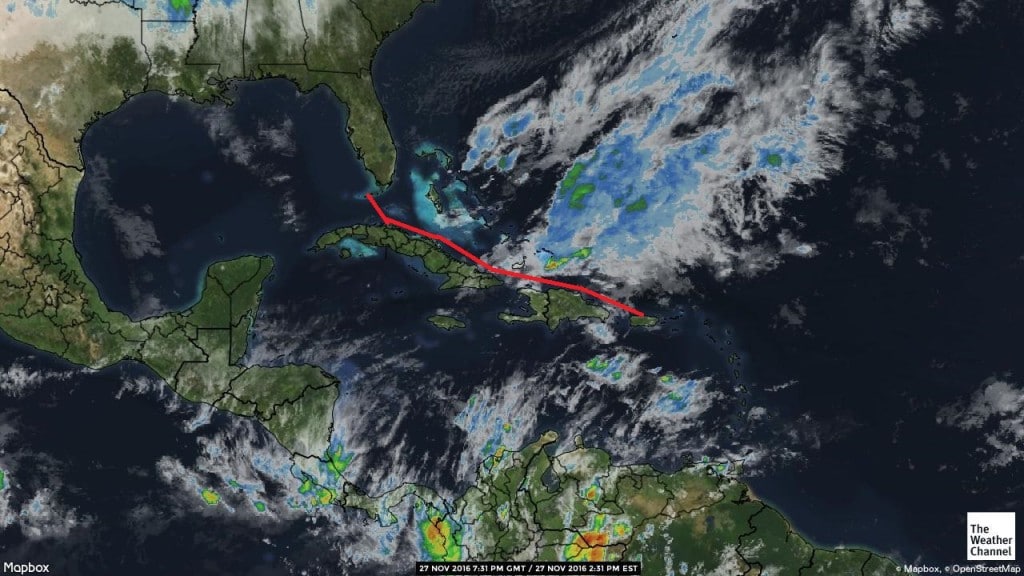Today we are in Western part of the Caribbean Sea, heading for Grand Cayman. And the course line is basically one straight North Westerly heading until we arrive there. Until we get there, there is not much excitement to be gleaned from the around the ship. Just sun, sea and wind. And numerous Starlings who are flying around the ship and who are not very happy with the ship. A bird is only really happy with a ship when it can hang on the wind generated by the bow plowing through the water. The airflow is pushed upwards and generates just sufficient up-lift for a bird to ride on it. On the Pacific side you see them hovering there for hours and hours. Here in the Caribe they have a problem, the Trade Wind. When going North West that is a following wind, which blows about 5 to 10 knots faster than the ship travels.
Birds hate a following wind as it plays havoc with the uplift needed under their wings. So today we saw a continuous performance of: bird getting into position, bird happy for a moment, wind increases for a moment, wind now upsets the balance, bird unhappy and flies away. Most of the time to the stern of the ship. Then either the birds has forgotten what has happened, or there is a new bird but shortly after the whole sequence starts again. It does give the officers and quartermasters on the bridge something to look at, because for the rest the sea is empty.
During last night we met a few ships who were on the line between from Panama and the Mona Passage (between Dominican Republic and Puerto Rico) or going even further east but by the early morning the ms Oosterdam had sailed in an area of nothingness. Here the water is very deep up, to 9000 feet is the norm, and that makes it less interesting for fishing boats and there is very little commercial traffic as there are not many cruise or regular ships who sail from the east coast of Costa Rica and Guatemala over to Grand Cayman or Jamaica. When we do our 7 days cruise next week, same as last 12 days ago, the Oosterdam will hug the coast and hop from port to port there. It does not hop over to Grand Cayman as the distance is just too long to fit in a seven day cruise. Hence we visit Grand Cayman on our 14 day around the Caribbean cruise when the Island lays on our return course back to Tampa. More or less straight in the line from Oranjestad to the West Point of Cuba. (Cabo San Antonio)
Thus we will meet cruise ships tomorrow who are also on a sail by the island cruise. Quite a few of them have just started their cruise in Miami or Fort Lauderdale and now have a sea day; they will have sailed around Cuba early this morning and will then arrive at Grand Cayman tomorrow. Or they have been visiting a port to the East (Bahama Island, Dominican Republic or Jamaica) and are now coming westward, either to go to the Yucatan (Cozumel, Progresso) to do the same we are doing, heading back to Florida after their stop at Grand Cayman.
Tomorrow there are supposed to be four ships in port and it will be interesting to see on what schedule they are, as how long they are staying totally depends on the time needed from where they were coming from or where they are going to. We will have a relative short stay with everybody back on board by 14.30. hrs. to ensure we will make Tampa on time. The Captain has already announced that he cannot wait for stragglers. For them there are very good flights back home but it is a fuss to come back and collect your luggage. So it is better to be on time and catch the tender home before it leaves without you.
Tomorrow we will be another warm and sunny day and ashore in Georgetown it will feel even warmer than in another port as the sand (which everywhere) reflects and absorbs the heat. No clouds expected at all and 84oF. 29oC. The trade wind is keeping this temperature down from soaring into the 90’s. if the wind was not there.
